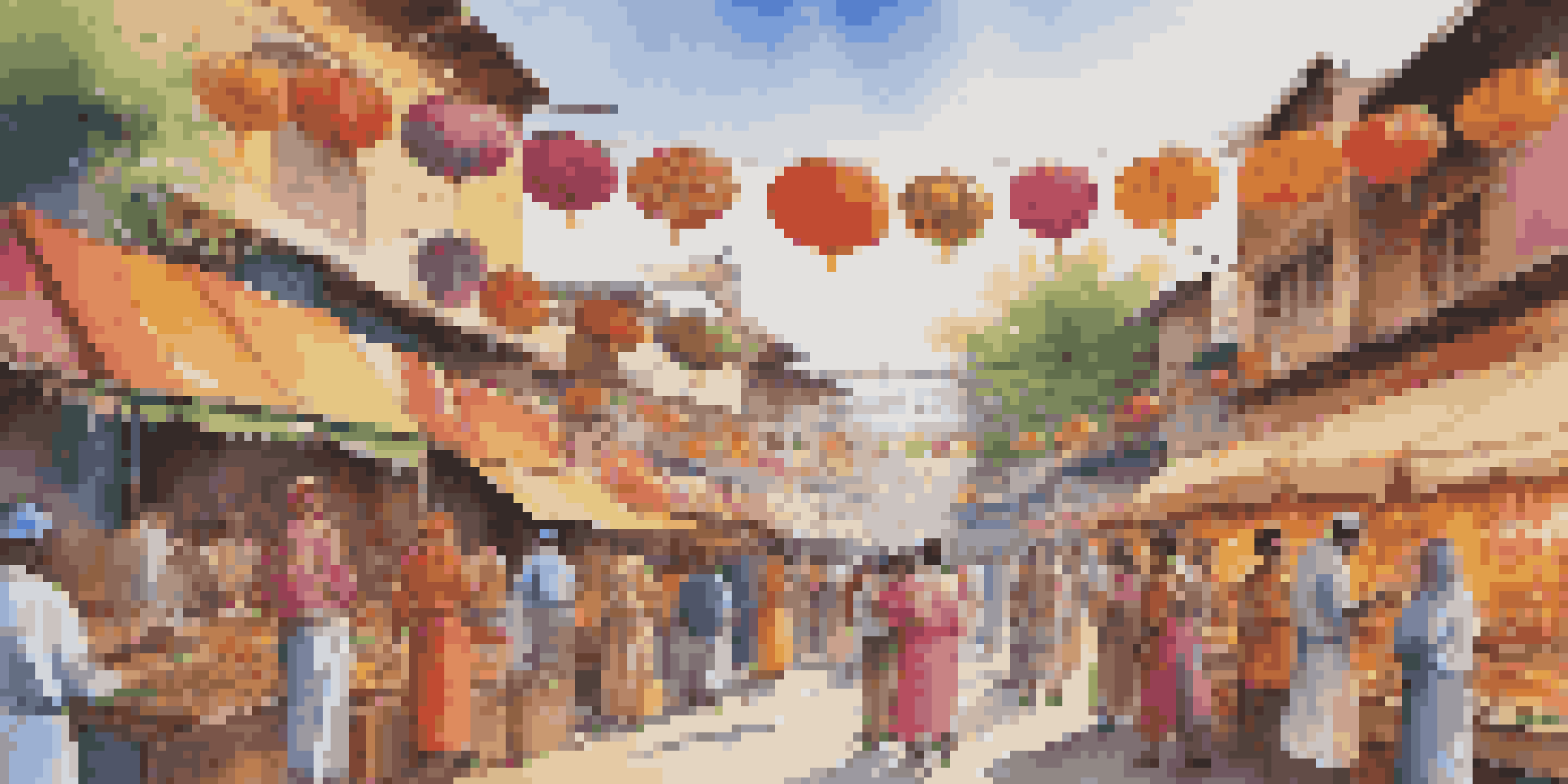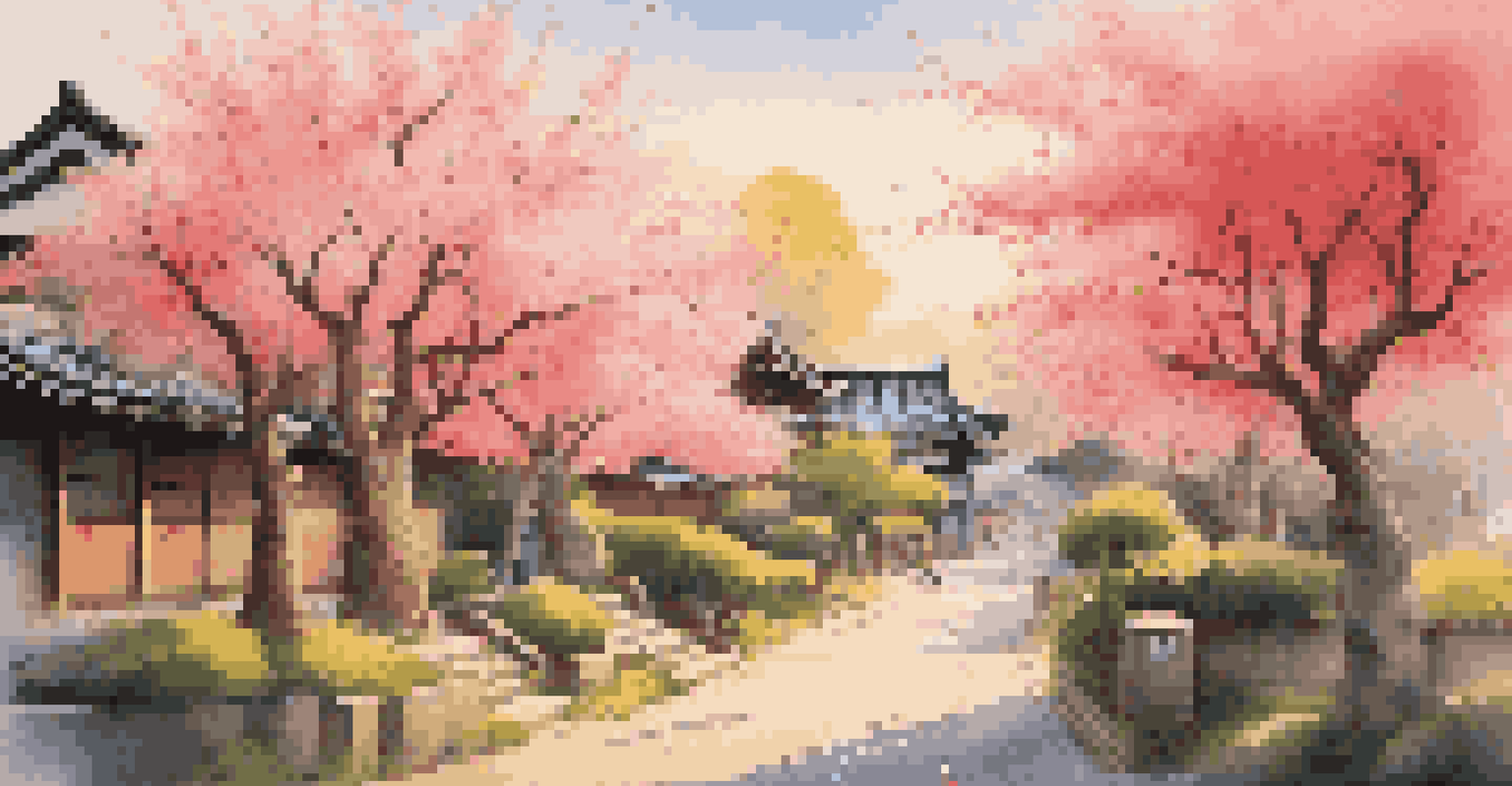Artistic Identity: The Artist's Role in Shaping Culture

Understanding Artistic Identity and Its Importance
Artistic identity refers to how artists perceive themselves and their role in society. It's not just about personal style; it encompasses beliefs, experiences, and cultural influences. This identity plays a crucial role in shaping the art they create, which in turn influences societal norms and values.
Art is the most beautiful of all lies.
When artists embrace their unique identity, they contribute to a richer cultural tapestry. This diversity can lead to new perspectives and innovations in various art forms, from visual arts to music and literature. As artists express their individuality, they invite others to explore their own identities.
Ultimately, an artist's identity is a mirror reflecting the complexities of culture. Through their work, artists can challenge stereotypes, provoke thought, and inspire change, making their role in society both vital and transformative.
The Historical Context of Artists as Cultural Shapers
Throughout history, artists have served as cultural commentators and innovators. Take the Renaissance, for example, when artists like Leonardo da Vinci and Michelangelo not only created masterpieces but also influenced philosophical and scientific thought. Their art sparked discussions about humanism and the nature of existence.

In more recent times, movements like the Harlem Renaissance showcased how artists could reflect and shape cultural identity within marginalized communities. Writers, musicians, and visual artists collaborated to express shared experiences, ultimately impacting societal views on race and identity.
Artistic Identity Shapes Culture
An artist's unique identity influences their work, contributing to cultural diversity and societal change.
These historical examples illustrate that artists don’t create in a vacuum. Rather, they respond to and shape the cultural currents of their time, leaving lasting legacies that continue to influence future generations.
Art as a Reflection of Society and Identity
Art often acts as a reflection of societal values and issues, providing insight into collective identity. For instance, the works of Frida Kahlo delve into themes of gender, identity, and pain, resonating with many who share similar experiences. Her art becomes a voice for those who might feel voiceless.
Every artist was first an amateur.
This reflective quality of art allows audiences to engage with their own identities and societal roles. When people see their struggles or triumphs depicted in art, it fosters a sense of connection and understanding. This shared experience can lead to greater empathy and social cohesion.
Moreover, artists can push boundaries and challenge societal norms through their work, encouraging audiences to reconsider their perspectives. By tackling difficult topics, they can inspire dialogue and, in some cases, spark movements for change.
The Role of Artists in Cultural Movements
Artists have always been at the forefront of cultural movements, using their platform to advocate for change. For instance, during the Civil Rights Movement, musicians like Bob Dylan and Nina Simone used their art to address racial injustices and inspire activism. Their songs became anthems of hope and resilience.
Similarly, contemporary movements such as Black Lives Matter have seen artists using their platforms to raise awareness and drive social change. Visual artists create powerful imagery that encapsulates the struggles for justice, while performers use their mediums to tell stories that resonate deeply with audiences.
Artists as Cultural Activists
Throughout history, artists have played a pivotal role in cultural movements, using their art to advocate for social change.
In this way, artists serve not only as creators but also as activists, leveraging their influence to promote social and cultural awareness. Their ability to engage audiences emotionally makes their contributions to cultural movements particularly impactful.
The Influence of Technology on Artistic Identity
In today's digital age, technology has transformed how artists express their identities and connect with audiences. Social media platforms allow artists to share their work with a global audience instantly, breaking down geographical barriers. This democratization of art has led to a surge in diverse voices being heard.
Furthermore, technology enables artists to experiment with new forms and mediums, expanding the possibilities of creative expression. From digital art to virtual reality experiences, the landscape of art is constantly evolving, reflecting contemporary society's complexities and innovations.
However, this shift also poses challenges, as the saturation of content can make it difficult for individual artists to stand out. The balance between maintaining personal identity and adapting to trends is a delicate dance that many contemporary artists navigate.
Navigating Cultural Appropriation and Authenticity
As artists explore various cultural influences, the line between inspiration and appropriation can become blurred. Cultural appropriation occurs when artists adopt elements from a culture without understanding or respecting its significance. This can lead to misunderstandings and reinforce stereotypes.
Authenticity plays a crucial role in how artists navigate this landscape. Artists who draw from their own experiences and backgrounds are more likely to create work that resonates genuinely with audiences. This authenticity not only enriches their art but also fosters deeper connections with viewers.
Navigating Globalization in Art
In a globalized world, artists blend cultural influences while striving to maintain authenticity and preserve their heritage.
Engaging with cultural elements responsibly requires awareness and sensitivity. By approaching other cultures with respect and a desire to learn, artists can create meaningful work that honors the traditions they draw from while still expressing their unique identities.
The Future of Artistic Identity in a Globalized World
As we move further into a globalized world, the concept of artistic identity continues to evolve. Artists are increasingly influenced by a blend of cultures, leading to new and unique forms of expression. This fusion creates exciting opportunities for collaboration and innovation in the arts.
However, global interconnectedness also presents challenges, such as the risk of homogenization. As different cultures interact, there's a concern that unique identities may be diluted. Artists play a crucial role in preserving their cultural heritage while embracing new influences.

Looking ahead, the future of artistic identity will likely be defined by a delicate balance between honoring one's roots and exploring new horizons. This dynamic interplay will shape not only the artists themselves but also the cultural landscape as a whole.